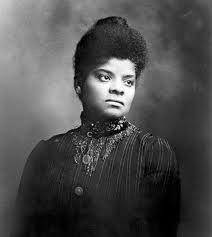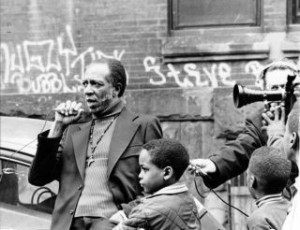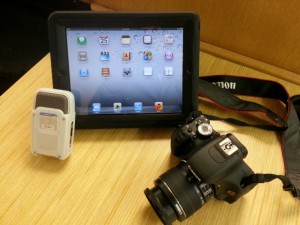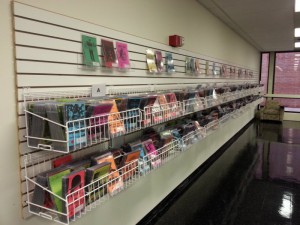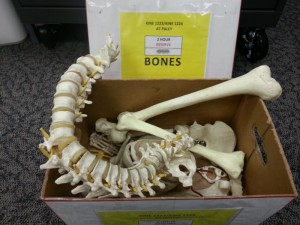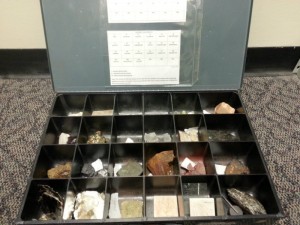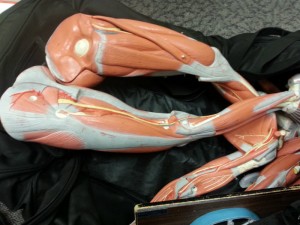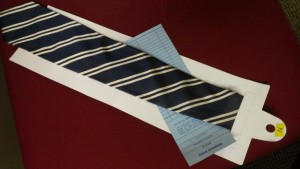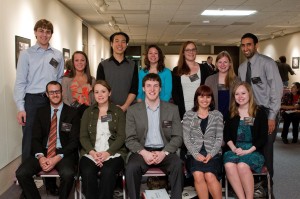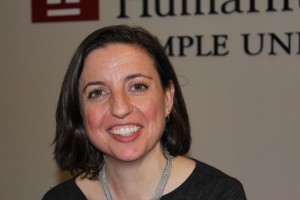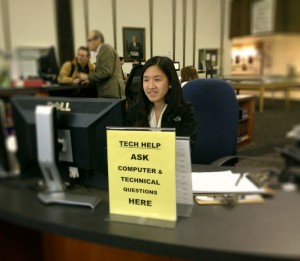
Penelope Myers, 2009. Head, Access Services at Paley Library, Temple University Libraries.
When Penelope Myers graduated from Temple University in 1968 with a degree in Political Science, she didn’t expect she’d one day return to her alma mater as a librarian. Last week I sat down with Penelope, Head of Access Services at Paley Library, to discuss her life, family, and service to Temple University. She’s seen plenty of change in her three decades at Temple University Libraries and has had fun in her adventures getting here.
As the Head of Access Services, Penelope oversees all Circulation and Reserve services, which includes patron accounts and borrowing privileges, interlibrary loan, and course reserves. She said it’s useful to have a “slow fuse” in the position, although she claimed not to have one herself. She does, however, have a sense of humor: a trait she said is useful in public service. “Personality is important when working with the public, and the ability to make people feel comfortable.” When I asked about her professional role models or supervisory philosophy, she said she follows the motto of “you get more flies with honey than you do with vinegar. If you want your staff to give good public service, you must give good service to your staff.”
Change is Inevitable
During her tenure at TU Libraries, Penelope has witnessed many changes both on campus and in the libraries. She’s watched the the campus expand and transform itself from a primarily commuter campus to a residential campus, including the construction of numerous buildings. She spoke about many changes in the libraries, most of which were public service improvements largely due to technological advancements and an increasingly more proactive staff.

First online circulation system at TU Libraries. Templar Yearbook, 1983.
During her first years in Paley Library in the mid-1980s she helped to “wean the patrons off the card catalog” to the library’s first online catalog system. The next biggest improvement, she recalled, was the switch from paper to online journals. That transition began in the mid to late 1990s with the advent of CD ROMs, which replaced print periodical directories. Full-text articles wouldn’t appear in prominence until the 2000s, so staff were still left with locating bound journals in the stacks, which she referred to as “the biggest service challenge of the time.” As smaller libraries across campus closed, Penelope assisted with the opening of The Depository, which is closed-stack shelving facility that houses lower circulating volumes, rare materials, older bound journals, and duplicates. “This was a huge project, but I enjoyed it,” she noted.
Who is Penelope Myers?

Penelope posing with her father’s pipe and The Times (London) cross-word puzzle. [n.d.].
Born in Trieste, Italy in a British military hospital on November 16, 1946, Penelope was raised in the suburbs of London, in Beckenham Kent. She describes it as an “absolutely fabulous place to grow up.” Penelope has three siblings, two older and one younger. “When you’re #3 of 4, you learn to get along with people,” she commented. This trait, she found, comes in handy as a public services librarian. Her father was a physician in the British army and moved the family to England when he took a position as a professor of physiology at the University of London. When he accepted a position as a medical researcher on arterial blood flow at the then Research Institute of Presbyterian Hospital, the family moved to the Philadelphia area in 1963. Penelope remained in England with friends and family while she finished high school. She joined her parents and siblings in Drexel Hill in July 1964.

Penelope’s senior picture in Temple University’s 1968 Templar Yearbook.
Two years later, when her family moved again for her father’s work to Birmingham, Alabama, Penelope stayed in Philadelphia to attend Temple University where she lived in the Peabody dorm, then an all girls dorm. At the time, the main library was Sullivan Memorial Library in Sullivan Hall. The stacks were closed to undergraduates, and she recalls filling out slips to request each book she wanted. The ‘new’ three story Paley Library, which featured open stacks, was finished by the time she graduated.

Sullivan Memorial Library, 1963.
Penelope graduated in 1968 with a BA in Political Science and a minor in History. Her first “real” job out of college was as a caseworker at the Commonwealth of Pennsylvania Welfare Department. She “didn’t last long at that position”, as she recalls, and did what many twenty-somethings do when they can’t figure out what to do with their lives; she traveled around Europe. Her gallivant included Morocco, Spain, Scotland, and England, and she still reflects on that experience as “the most exciting and exhilarating year of her life.” Through a mutual friend, she was introduced to a Philadelphia photographer named Laurence Myers who was living in southern Spain at the time.
When Laurence moved back to Philadelphia, Penelope returned to Philadelphia too, and they married in 1972.
“Librarians Are Fun”
That same year, the Myers moved to Rochester, NY so Laurence could attend graduate school for Photography at the University of Rochester, and Penelope got her first library job as a bindery clerk in the Rochester Institute of Technology library. There, she started hanging out with the Reference Librarians, who were “fun,” she thought, and she “wanted to have fun, too.” So, she enrolled part-time at the nearby library school. Before she even finished her degree she was hired to fill a Librarian vacancy at the Institute of Technology. Penelope spent three years in that position and “loved it.” “I worked with great colleagues and got to do a little of everything,” she reminisced.
In 1976 the Myers left Rochester to settle in Philadelphia, where they had two children: Evan and Rachel, both of whom received undergraduate degrees from Temple University. Penelope devoted seven years to the stay-at-home mom profession until Valentine’s Day
1983 when she took a part-time Reference Librarian position at the Zahn Center library (now closed) in Ritter Hall at Temple University. A month later she moved over to the Paley Library. In summer 1983 she transferred to Paley’s Circulation Unit. Two years later Penelope was hired as a full-time TAUP librarian in the Circulation Unit making a glorious annual salary of $20,000. She attained her current position of Head of Access Services in 1986. She assured me her salary has since increased.
500 Birds and Counting
This avid bird watcher, who has logged over 500 birds, but does not Tweet, looks forward to retirement, which she will spend reading, traveling, and perhaps volunteering at a wildlife refuge. In the meantime, she continues to enjoy her work where, in her words, “the people are great” and “there’s always something interesting going on.”


